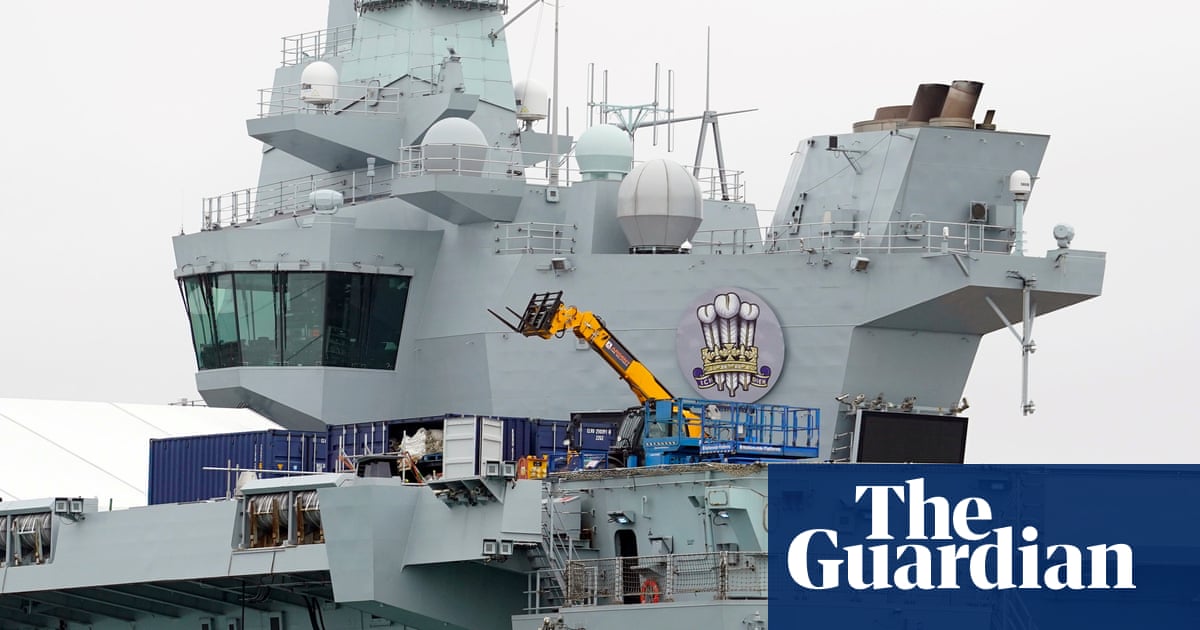
HMS Queen Elizabeth, one of Britain’s two flagship aircraft carriers, was forced to pull out of a Nato exercise off the Norwegian coast after pre-sailing checks uncovered a coupling problem on its starboard propeller shaft. Plans to set sail from Portsmouth on Sunday were abandoned and sister vessel HMS Prince of Wales is being readied hastily to take its place.
Didn’t another embarrassing breakdown happen recently?
The HMS Prince of Wales broke down in August 2022, one day after setting sail for the US, due to a broken propeller shaft, which was misaligned when installed. The vessel had also been flooded twice in its first year of service, after being commissioned in 2019.
After the Prince of Wales incident, the propellers on the Queen Elizabeth were also checked and no misalignment discovered. The defects were “not a class issue,” the Ministry of Defence confidently said in April, although the latest failure will raise questions as to how effective the checks on the Queen Elizabeth were.
The Royal Navy insists that this time the issue with the propeller, designed by Rolls-Royce, is different. The problem on the Queen Elizabeth relates to the coupling on the starboard propeller shaft, an issue most likely caused by “wear and tear”, and it was deemed prudent not to sail and risk a failure at sea. It is not yet clear how extensive the repairs will have to be, and whether the Queen Elizabeth will have to return to Rosyth dockyard on Scotland’s Firth of Forth.
“It’s not uncommon to have maintenance issues with state-of-the-art ships which contain complex engineering and technology,” the navy said.
How much of a problem is it this time?
Warships periodically suffer from mechanical issues, although the UK’s two new aircraft carriers – built for £6.4bn – seem to be particularly unfortunate. France’s only carrier, the Charles de Gaulle, broke down in 2009 and 2010 but has not been reported as having problems recently. The USS Gerald R Ford, one of 11 in the US navy, suffered from a propulsion problem in 2018 forcing it to abandon sea trials.
Because the UK has a second aircraft carrier available, the Prince of Wales will be able to deploy in the next fortnight, navy sources indicated. That will allow it to take the place of its sister vessel in Exercise Steadfast Defender, Nato’s largest military exercise for decades, which takes place off the Norwegian coast. The Prince of Wales will form the heart of a carrier strike group, defending Scandinavian countries from a simulated Russian attack.
Does it matter if the Prince of Wales can deploy instead?
Strictly no. All navies need alternate warships and militaries have to show they can be adaptable. There is no maritime threat to the UK, and despite talk of Britain sending an aircraft carrier to the southern Red Sea, no need for it to do so given the US is deploying the USS Dwight D Eisenhower. The US navy secretary, Carlos Del Toro, said in London last month that the UK was providing the most useful warship it could: HMS Diamond, a destroyer that specialises in eliminating aerial threats.
Politically, however, the situation is not ideal. Nick Childs, a naval analyst with the International Institute for Strategic Studies, said: “It’s somewhat embarrassing and not ideal to say the least, given the flagship nature of these ships and the fact that much had made of HMS Queen Elizabeth taking a prominent role in this major upcoming Nato exercise Steadfast Defender.” Allies may wonder how reliable the Royal Navy would be in the event of a significant crisis involving Russia – the British contribution to Nato’s maritime strength is supposed to be 20%-25%.
Is this a systemic problem of an under-resourced military?
A report by the Commons defence committee on Sunday highlighted that the UK’s armed forces were “consistently overstretched” while personnel numbers were falling. Navy recruitment targets have been missed every year since 2010 and overall service numbers are 5% below the target set in 2015. Naval engineers are one of the professions emphasised as having “had huge demands made of them”.
Yet, for all the complaints about overstretch, defence spending has been rising in real terms since 2017-18, with the navy the most modern of the three services. Questions about the breakdown of Britain’s two aircraft carriers in relatively short order may better focused on their design, in case both are needed at once.











